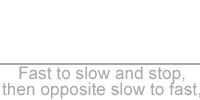
by Nash Lin | Jun 23, 2013 | Animation
Realistic animations are what fascinates the viewer. The audience is able to fully enjoy the content and the story behind the animation because the motion is believable. One way to make our animations realistic is by adding force in the movement. Applying appropriate timing gives a realistic indication of the object's speed. When an object is going to travel 1 meter, the time it requires to reach from point A to point B indicates how fast the object moving. If the object takes 1 minute to travel from A to B, that object might be a snail. If the object moves from point A to B within 1 second, it feels like a fast rolling ball. When we animate, we think about what exactly do we want this object to be. If someone animates a bullet flying across the room using 30 seconds, that might look like we are watching The Matrix. If an object starts to move from stationary, it takes time for the object to travel fast. A car that moves on green light will move from slow speed to a fast speed because the car needs to accelerate. A heavy truck will take more time to speed up while a racing car takes a split second to be traveling fast. Take a moment today to observe when you are on the road today. Observe the difference between the picking up speed for different cars. When an objects is coming to a stop, it takes time to slow down too. For example, when someone switches off the fan, it does not stop immediately. The fan's blade...
by Nash Lin | Aug 28, 2012 | Animation, What is Animation?
It’s been sometime since I last posted and yes, I was busy. I’m busy writing out a e-book, titled Animators Starter Kit Learn to Animate with Observation. The name is not confirmed yet but feel free to give suggestion if you have a better name! I’ve given a lot of thoughts for this book as I really want to share my ten years experience in becoming an animator from scratch. This ebook is going out to help friends or animators wannabes who wish to learn and create their own animation from the fundamentals. This is the juice of the book but that is easily available on the net! Thus, I’ve also included topics that even animators themselves sometimes do not learn in school. Ten years back in school, I wish I had learn all these topics in school on top of learning digital animation in softwares. Topics such as observation skills, self assessment, motivation, etc. From what I can recall from memory, my teachers basically teach us how to draw in Photoshop or Flash without basic understanding of drawing. Worst, we were not taught how to generate concepts for our topics and our assignment grades us on our creativity. Is this still happening to you? I certainly hope not but for some unfortunate students who has this experience, I really hope to give you more insights and depth to your animation and the creativity within. For a start, here are the contents I’ve included in my e-book and it is still under construction. Much of the contents has been written and is still undergoing polishing. What...
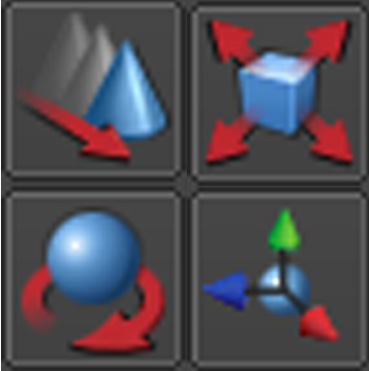
by Nash Lin | Jul 16, 2012 | Animation
4 factors to create realistic animation There are many methods that will make your audience goes 'WOW!' when they see your animation. Making an object moves is an animation, but making an object comes alive is the toughest challenge and it can be very rewarding and satisfying. Here are 4 factors to create realistic animation, references, target, knowledge and pipeline. In this article, I'll use bouncing ball as an example. 1. We need to find references Art is subjective and we must find some references that will provide us a benchmark on a good looking animation. In this tutorial, we need to create a bouncing ball, so all we have to do is to go Youtube and type in the words ‘bouncing ball’ and we will many real life sample video references to compare with. 2. We need to set a target We need to know how we want our animation to look like even before we create it. This applies to all animation created in the industry. Big or small companies still practice creating storyboards and animatics to define their targeted animation outcome. In this tutorial, our target is to create a bouncing ball similar to a real basketball bouncing. 3. We need 2 good knowledge In animation context, we need to know principal of animation and software’s operation skill to achieve our target. This 2 knowledge are the critical factors to creating a good animation and they both need to work hand in hand. Principal of animation makes an animation realistic and believable because of the way human’s eyes perceive movement. Software skills are considered...
by Nash Lin | Jul 1, 2012 | Animation
Animators need different skill sets to create good quality animation. However, to be hired as an animator, you need to have the minimal animation skills and standard. If you are a graduate and had send out hundreds of application with no reply, it’s high time to polish your demo reel. Here are 4 critical skills an animator should possess: Animation Quality - Animation needs realism and entertaining value that can be use immediately (by a company). High animation quality can be achieved if your demo reel covers the 12 principal of animations. Software skill - You must be well verse in operating the animation software in order to create animation exactly how the storyboard wants it to be. Speed and efficiency - You are able to complete your animation within a reasonable timeline given by your lead animator or director. Creativity - You demonstrate creativity in your animation on top of the given storyboard which resulted in a higher quality visualization. If you are able to achieve the above standards, you should be easily employable. Hah! That’s easier said than done! Only a few fresh graduates, mainly the top students, can achieve the above requirements and these students are mostly head hunted before they graduate. As for the rest, many became jobless, some switched career or some starved to death while waiting to be hired. So what can fresh graduates do without much industry experience? I’m here to share with you a very important tip: you do not necessarily need to good in these 4 areas to be employable. If you need a job urgently, you can...
by Nash Lin | Jun 7, 2012 | Animation
I have this animation student, Tommy, who is 16 years old. He is actually very timid and quiet because he doesn't talk much and he is always apologetic. He says "sorry" every other minutes for things he thought he did wrong. However, Tommy likes animation a lot and watched a lot of animes such as Bleach, Soul eater, etc. My first impression about him is that he might just touch this (animation class) for a while and he will get bored and quit. I tell myself, "Well, I'm here to guide him, I'll try my best to teach him." It was tough in the beginning to teach Tommy because he is too quiet and I have no idea what's going on in his mind. As a teacher, it can be frustrating to not receive any response from student, so I try means and ways to motivate and break ice with him. "If a teacher gives up on any student, its as bad as looking at a person drowning by the sea without helping him," this was what I told myself a year back. I know it is always irritating to nag like a mother to a child, but I guess thats the job for a teacher; to constantly remind and motivate the student no matter how bad their attitude or capability are. Trying many means and ways, my most successful approach to motivate Tommy is 'Passion'. I find out what he likes to do, what anime he likes to watch and what toys he have. I use what is 'Fun' to him as a carrot to get him moving forward....
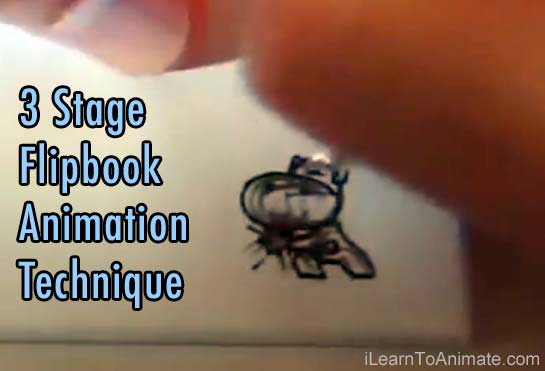
by Nash Lin | Apr 15, 2012 | Animation, Popular
Drawing a flipbook animation that involves human movement requires several steps. This fireball character flipbook animation tutorial shows you how to start drawing the skeleton poses, followed by the volume and eventually the flesh. You can be skip the volume of a human stage provided when you are familiar with human muscle drawing. Character Flipbook Animation Tutorial - Skeleton Pose The rationale behind drawing the skeleton first is to serve as a preview of the action. Take for example a 5 seconds animation which will be played at 25 frames per second (fps). The artist will need to draw 125 frames of drawing. Wow! Without the skeleton animation to act as a preview, any changes along the production will requires a lot of time to redraw. This definitely reduces in production efficiency. Once the animation is drawn in skeleton, it should be reviewed by the artist and the director. The checking ensures the animation and motion looks close to the end results. In this video, I’m going to animate this bovine casting a fireball, similar to the game called Street Fighter. The bovine will store his energy by his waist and eventually releasing the power in front of him, shooting a fireball outward. Begin the animation with a neutral pose. This serves as a proportion guide for the character. When in doubt during the animation process, do refer back to the neutral pose to check if the character’s proportion is consistent. Consistency is very important in human animation. I do not want my character to grow taller or shrink in size unintentionally. There are two types of animation approach during production. They...





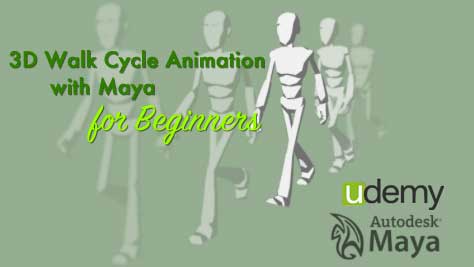
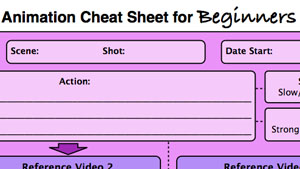
 Nash is a self taught animator, a fanatic gamer and a digital media coach. He has created many types of 2D and 3D animation. You will get to learn effective animation skills and tips with Nash.
Nash is a self taught animator, a fanatic gamer and a digital media coach. He has created many types of 2D and 3D animation. You will get to learn effective animation skills and tips with Nash. 
